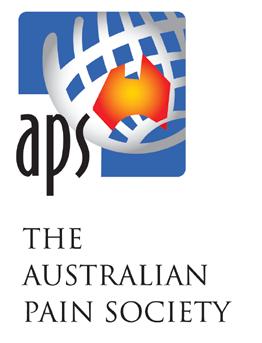Australian Pain Society Newsletter





October already – another year has flown by!
I, like everyone, have been busy beavering away over the last few months. But despite everything that’s going on, I found the time to sit and read Liam Mannix’s brilliant book, BACK UP. Liam was part of the ‘Pain in the Media’ session at the ASM in Canberra, and I was certainly looking forward to the release of his book after he mentioned it earlier in the year. My review of BACK UP features in this edition of the eNewsletter, so I won’t spoil too much of it here, but I found it to be a very enjoyable read and highly recommend it – regardless of whether you are inside or outside the pain bubble.
The Pain in Childhood Special Interest Group always makes great contributions with their journal reviews, and this month is no exception. Meredith Smith and Nadine Smith both highlight research involving children with cerebral palsy. Nadine’s journal review explored a recommended list of tools for clinical research studies in children with pain and cerebral palsy. While the list will ultimately be useful, Nadine did note there was limited (or unclear) consumer involvement in the process.

Consumer involvement in clinical practice and research is something I have been thinking about a lot more over the past year. I recently had the opportunity to attend a consumer advisory group meeting for one of the other professional organisations I am a member of, and it was an incredibly insightful experience. It is fantastic to see more Australian organisations putting a greater emphasis on involving those with lived experience.
Finally, preparations for the 2024 APS ASM in Darwin are well and truly underway, with Abstract and Topical Session submissions closing in the coming weeks. Registrations will open after the full program is released in November, so if you haven’t already started your planning – now is the time!
Until next time, Lincoln
We are excited to see you at the APS 2024 Annual Scientific Meeting, and are thrilled to host it in Larrakia country/Darwin.
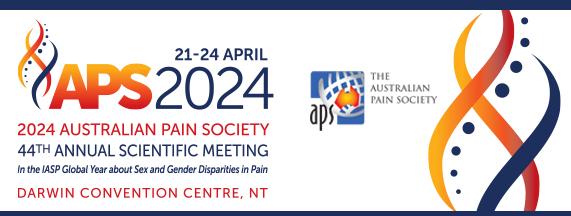
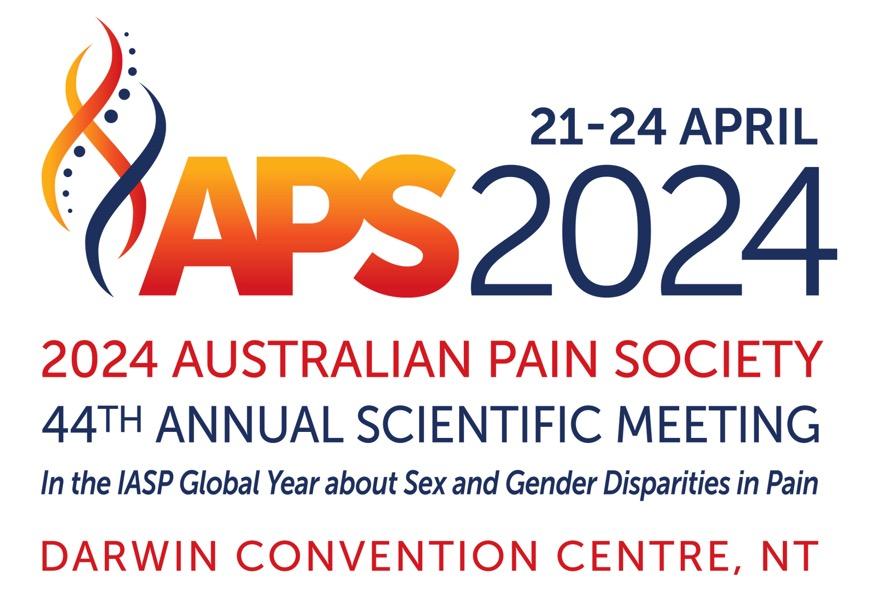
The full conference program, including the list of concurrent sessions and full pre-conference workshop programs, will be released in November.
Registration Opens: Tuesday 21 November 2023
Registration information is now available on the conference website
Complete the Expression of Interest form to be kept up to date with conference news as it becomes available.
Should you have any queries about the conference, please contact the Conference Secretariat.
Submissions Deadline: Tuesday 10 October 2023
On behalf of the Scientific Program Committee and the Local Organising Committee, we are pleased to advise topical session submissions for APS 2024 are now open.


The deadline for Topical Session submissions is: Tuesday 10 October 2023
View the topical session submission guidelines.
The online topical session submission portal is now available via the conference website.
We look forward to receiving your submissions. Should you have any queries regarding your submission or the process, please contact the Conference Secretariat
Now Open!
Submissions closing: Monday 23 October 2023
On behalf of the Scientific Program Committee and the Local Organising Committee, we are pleased to advise that abstract submissions for APS 2024 are now open.

Please note the following points regarding the submission process:
If your abstract is accepted, either as a free paper or poster, there is an expectation that you will attend the conference to present this abstract.
Expressions of Interest (EOI) for travel grant applications are also being collected as part of the submission process.
The submitting author MUST be the main author and the person who will present the work at the ASM.
To view the abstract submission guidelines please click here.
There are THREE categories for Abstract Submissions.
Please visit the links below:
Experimental Studies & Clinical Trials Abstracts
Clinical Practice & Services Delivery Abstracts
Case Reports Abstracts
Delegates wishing to apply for a travel grant must be the major contributor and submitting author of the abstract. Only delegates who have ticked ‘yes’ to the Travel Grant section of the abstract submission process AND completed the associated application form will be considered. For further information on the Travel Grant Application process, separate Travel Grant Application Form, and to ensure you meet the terms and conditions please click here.
We look forward to receiving your submissions. Should you have any queries regarding your submission or the process, please contact the Conference Secretariat
Submission Deadline: Tuesday 10 October 2023
This award showcases rising star pain researchers in Australia and may be awarded annually subject to the application of suitable candidates. The Rising Star Winner will receive a return domestic airfare, accommodation, and complimentary registration to attend the 2024 APS 44th ASM where they will give a plenary presentation to showcase their work and ideas.

Applications are now open. For further information and to apply, please click here.
This award will be based on excellence in pain research achievements. Applicants are asked to self-nominate and provide a one-page personal statement addressing the following criteria, with evidence:
• Track record, relative to opportunity (i.e., achievements rather than aspirations)
Along with three (3) selected publications that reflect your most important researchrelated contributions. These may be from any stage of your research career and should be accompanied by a summary detailing what your contribution was, why you think the publication is important and what impact it has had.
• Nominees must hold a PhD and be within five (5) years of conferral by the deadline of this award application.
• Applicants can be working in any field of pain research, including basic science, biomedical, clinical, and other applied or cross-disciplinary sciences.
• The selection committee will consider personal or extenuating circumstances that might provide grounds for consideration if the above eligibility criteria are not met.
• Only individual scientists are eligible (not research teams)
• Applicants must be available to attend APS 2024 in person to deliver the Rising Star presentation
• Applicants must be a current member of the APS
• Applicants must be an Australian citizen/ resident, currently working in Australia and have spent at least two post-doctoral years in Australia, or have returned to continue working in Australia
For further information and to apply, please visit the Rising Star Application Guidelines.
We look forward to receiving your submission!
We are excited to release an initial outline of the APS 2024 ASM program, which has been changed to better align with flights in and out of Darwin.
The early release of the program provides delegates the opportunity to organise flights and accommodation ahead of time, so we encourage you to start planning your trip now!
The updated format gives delegates the chance to explore Darwin during the conference. Delegates will also be able to attend the ANZAC Dawn Service as a group on Thursday morning.
Don’t miss this amazing opportunity to be a part of Australia’s only multidisciplinary pain conference in the beautiful and vibrant city of Darwin on Larrakia country.
Please visit the conference website here: www.dcconferences.com.au/aps2024
If you have any questions, please contact the APS Conference Secretariat: apsasm@dcconferences.com.au



21-24 APRIL
8.30am - 5.00pm, Sunday 21 April 2024
Darwin Convention Centre, NT
Registration Fees starting from $160
WORKSHOP OVERVIEW
With a focus on managing acute pain, and the challenging cohort with This workshop aims to be engaging and practical with a focus on managing acute pain and the challenging cohort with co- existing chronic pain. In keeping with territory strengths we will explore strategies to engage Indigenous Australians. There will be a session focusing on pelvic pain and a third session with world class speakers from physiotherapy and psychology sharing strategies for the acute pain round and finish the day with some topical, cutting edge pharmacology. The workshop is divided into two half days and we encourage attendance at both.
For further information: www.dcconferences.com.au/aps2024
Questions? Please email us at apsasm@dcconferences.com.au
21-24 APRIL BASIC PAIN
DARWIN CONVENTION
1.30pm - 5.00pm, Sunday 21 April 2024
Darwin Convention Centre, NT
Registration Fees starting from $160
WORKSHOP OVERVIEW
This workshop will showcase the latest in Australian basic pain research from early to mid-career and senior researchers and provide a forum to discuss mechanisms of nociception and pain across all levels of investigation: from molecular and cellular analyses to studies in animals and humans (pre-clinical or clinical).
The workshop is open to all interested in mechanisms of nociception and pain, including basic and clinical researchers, health professionals and students at all levels.
For further information: www.dcconferences.com.au/aps2024 Questions? Please email us at apsasm@dcconferences.com.au
21-24
8.30am - 12.30pm, Sunday 21 April 2024
Darwin Convention Centre, NT
Registration Fees starting from $160
WORKSHOP OVERVIEW
This will be a succinct overview of the physiology, clinical assessment, and clinical management of pain. The workshop is aimed at the general practitioner, specialist, allied health clinician or psychologist looking for an introduction to, or update on, persistent pain management. This workshop is grounded in a biopsychosocial understanding of pain mechanisms and developing a mechanism-based approach to pain assessment and management. And will compliment those with an interest in attending one of the afternoon sessions on pharmacology, psychology or physiotherapy.
For further information: www.dcconferences.com.au/aps2024 Questions? Please email us at apsasm@dcconferences.com.au



21-24 APRIL
2024
DARWIN 2024 AUSTRALIAN PAIN SOCIETY 44TH ANNUAL SCIENTIFIC MEETING
PAIN IN CHILDHOOD
PRE-CONFERENCE WORKSHOP
8.30am - 12.30pm, Sunday 21 April 2024
Darwin Convention Centre, NT
Registration Fees starting from $160
WORKSHOP OVERVIEW
This multidisciplinary workshop commences with evidence showing links between sensory modulation and pain and treatment options, followed by research focused on pain experiences of children with cerebral palsy and developmental disabilities.
The second section of the workshop explores procedural pain; initially considering improving procedures for children who have experienced medical trauma. Finally, we will open general multidisciplinary discussion of Australian and international procedural pain management experiences to inform the development of future procedural pain guidelines.
For further information: www.dcconferences.com.au/aps2024
PHYSIOTHERAPY IN PAIN MANAGEMENT
21-24 APRIL
DARWIN 2024 AUSTRALIAN PAIN SOCIETY 44TH ANNUAL SCIENTIFIC MEETING



PRE-CONFERENCE WORKSHOP
1.30pm - 5.00pm, Sunday 21 April 2024
Registration Fees starting from $160
WORKSHOP OVERVIEW
This workshop will present an overview of opportunities and challenges in pain management in Aboriginal and Torres Strait Islander Communities. A considerable proportion of the workshop will be spent identifying, discussing and practising culturally-informed strategies, including the Clinical Yarning model of clinical communication, to enable attendees to develop their skills in working with this population group. This workshop will be highly practical, appropriate for any clinician who deals with patients in pain. The specific skills practiced in this workshop will be able to immediately implemented into clinical practice.
For further information: www.dcconferences.com.au/aps2024
Questions? Please email us at apsasm@dcconferences.com.au CONVENTION CENTRE, NT In the IASP Global Year about Sex and Gender Disparities in Pain
21-24
2024
In the IASP Global Year about Sex and Gender Disparities in Pain 2024 AUSTRALIAN PAIN SOCIETY 44TH ANNUAL SCIENTIFIC MEETING
DARWIN CONVENTION CENTRE, NT
Diving into the connections between trauma and complex chronic pain
Registration Fees starting from $160 WORKSHOP OVERVIEW
This workshop provides an opportunity for discussion of the broader psychological issues in pain management, including understanding mechanisms of behavioural change, prevention of chronicity, and the challenges of managing the complexity of mental health comorbidities. For its inaugural event, the 2024 workshop will focus on the complexity of managing chronic pain and trauma, and will aim to provide a deeper understanding of this relationship to more e ectively inform clinical decision-making. It will teach a set of foundational principles from pain neuroscience and a trauma-informed perspective to e ectively guide the assessment and management of those with pain and trauma.
For further information: www.dcconferences.com.au/aps2024
Questions? Please email us at apsasm@dcconferences.com.au
The Board of Directors is seeking nominations from all Australian Pain Society (APS) members for candidates to be considered for the Distinguished Member Award(s) to be presented at the APS 44th Annual Scientific Meeting to be held in Darwin from 21 - 24 April 2024.

Eligibility criteria:
Candidates must be APS members who generally have had a lengthy career in the field of pain and have:
• Made major contribution1 towards the Society, and
• Significantly contributed to the science of pain management, and/or
• Played a significant clinical, educational or research role in the field of Pain Management in Australia
1 Major contributions include, but are not limited to:
• Scientific Program Committee involvement
• Pain research
• APS projects
• Subcommittee involvement
• Board liaison
• Contributions to ASM presentations
Nomination Guidelines:
• A ‘Nomination for Distinguished Member Award’ form must be completed.
• As a guide, it is desirable that nominees have held continuous APS membership for over 10 years.
• Nominations must include an 800-900 word biography of the nominee. The Board will not consider incomplete nomination forms.
• Unsuccessful nominations are not automatically put forward in subsequent years.
• The nominator must be prepared to present a brief summary of the Distinguished Member biography in the ASM program, or arrange a suitable alternate for the presentation segment.
Submission:
• All nominations to be submitted to the APS Secretariat by 31 October 2023
Notification:
• The APS Board will notify successful nominees by 31 December 2023
• Distinguished Member recipients are actively encouraged to attend the Annual Scientific Meeting in order to receive their award in person from the APS President.
The nomination form and a listing of past recipients of the Distinguished Member Award, including their biographies, can be found on the APS website.
The Australian Pain Society (APS) is pleased to announce the availability of several Travel Grants for members to present their research at our Annual Scientific Meeting (ASM).


Travel Grants are awarded as follows: PhD students (up to the value of $500)
A single dedicated Travel Grant for a Pain in Childhood (PinC) SIG member ($500)
A single dedicated Travel Grant for a Basic Pain Research (BPR) SIG member ($500)
If funds permit, further travel grants may be offered to nurses, allied health professionals, and other post-graduate students.
This Travel Grant program is designed to encourage contribution to, and participation in, the ASM, and is made possible through an allocation of a capped pool of APS operating funds.
Full eligibility criteria and Terms and Conditions are available on the Travel Grants webpage.
To be considered for a Travel Grant:
a. an EOI for a Travel Grant must be indicated when your abstract is submitted; AND
b. a Travel Grant Application form must be submitted to aps@apsoc.org.au by 5pm on 30 November 2023 – no exceptions.
Author name: Meredith Smith
Author biography: Meredith is a current PhD candidate and lecturer in Physiotherapy at the University of Adelaide. Meredith’s PhD is focusing on tailoring chronic pain assessment to children and young people with cerebral palsy. Meredith also works clinically at Novita and the Women’s and Children’s Hospital, with a focus on paediatric disability.
Author contact details: Meredith.smith@adelaide.edu.au
It was a privilege to receive a travel grant to attend and present a poster at the Australian Pain Society Annual Scientific Meeting in April 2023. The grant enabled me to travel from Adelaide to attend the conference and it was wonderful to be at an in-person event! My poster presented the results of a systematic review investigating pain interference assessment tools for children and adults who are unable to self-report. From this review, we were able to recommend one assessment tool for use in children and adolescents, the Paediatric Pain Profile. This tool has evidence for content validity specifically in children and adolescents who are unable to selfreport. No tool had sufficient evidence to be recommended for use in the adult population, however there are two tools which could be promising (modified Brief Pain Inventory and Doloplus-2) if further psychometric property research is completed.
This was my first time attending the APS conference and it was such a welcoming and inclusive atmosphere. I attended the conference with a couple of other research colleagues who have been involved in a broad agenda of research for children with cerebral palsy, and are now focusing on pain assessment and management in this population. Everyone I met was so keen to
share their experiences and information about upcoming opportunities, which was very refreshing. The plenary speakers and workshop presenters were all outstanding, and I felt very privileged to be able to hear of the variety of work being done in the pain field. It was fantastic to be able to meet other researchers during the poster viewing times and have excellent discussions about the importance of pain assessment and management in paediatric disability. I also enjoyed attending the workshop on pain in vulnerable populations, which really highlighted how much need there is for research in this field. I was excited to hear of the recent publication of the Pediatric Pain Management Standards in Canada, which have a focus area on ensuring access to comprehensive pain assessment. This area states that health professionals “have access to a variety of validated tools to support the needs and abilities of all children and families receiving care at my organisation”. It was fantastic to hear that ensuring all children have the ability to self-report their pain, including those who have varying cognitive and communication ability, is a focus of this pain management standard. It was also exciting to be able to meet several researchers involved in the Pain in Child Health (PICH) group, which has prompted me to now submit an application to join.
I am already looking forward to returning to the Annual Scientific Meeting in 2024. It will be a great opportunity to reconnect with friends and colleagues and hear of the further progress being made in this exciting research field.
Declaration: Meredith Smith received funding from the Australian Pain Society for a Travel Grant to attend the Annual Scientific Meeting.
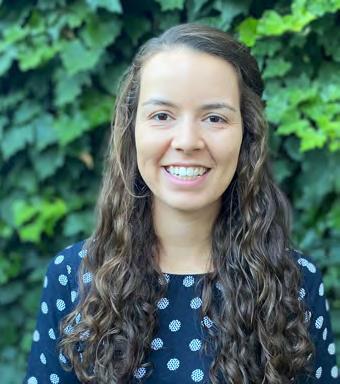
tools for measuring chronic pain interference in children and adults who are unable to self-report: a systematic review of psychometric properties
Author name: Fernando
TinocoAuthor biography: Fernando received his Bachelor of Medical Science (Honours) at the University of Sydney and is a current PhD candidate in his final year. He has a particular interest in anatomy and neuroscience and currently works as a casual academic within these subject areas, as well as biology and physics, and an academic advisor and student ambassador. Currently, he is researching the neural mechanisms of chronic pain following spinal cord injury and the effects of cannabidiol treatment.

Author contact details: fernando.tinoco@sydney.edu.au
The 2023 Annual Scientific Meeting (ASM) in Canberra was the second APS ASM I have attended, my prior one being the ASM 2022 held in Hobart. Previously, I had never visited these two cities which added to the excitement of attending these ASM’s and gave me the opportunity to explore new landscapes and create unforgettable memories. I find these annual ASM’s very welcoming and enjoyable to attend, particularly for newcomers as the crowd consists of local academics, clinicians, and researchers. Evidently, many attendees are in the field of pain research in Australia which makes for insightful discussion and endless opportunities to network and learn. My research presented as a concurrent free paper session which was my first-time presenting data and preliminary results relating to my PhD project at a scientific conference. We have found widespread increases and decreases in cerebral blood flow in spinal cord injury (SCI) subjects with and without chronic pain. When compared with able-bodied controls and SCI without pain, SCI subjects with pain show significant decreases in blood flow in the primary somatosensory cortex and parietal association area, respectively. Our findings suggest that the development of chronic pain may be driven by dysfunctional ongoing activity within somatosensory association areas of the brain. Interestingly, the neural changes that result from chronic pain also appear to be impacted by the extent of injury, as our sample consists of incomplete injuries and show differing results to the literature comprising of predominantly complete injuries (i.e., loss of sensory and motor function). I was grateful to have piqued the interest of attendees who had follow-up questions for me and my work.
These ASM’s always leave you with inspiration and motivation when heading back home. Getting to hear and meet international experts within the pain research sphere is invaluable – each keynote speaker brings ideas and topics that allow you to create new perspectives on our understanding of pain. I particularly enjoyed Dr Joshua Pate’s Tess Cramond lecture on ‘What if kids learnt about pain at school?’. My biggest take-home message was the importance of pain education from a young age and the opportunity that this can bring for future adults managing, experiencing, and discussing pain. It was refreshing to see an educational approach towards pain, something that is widely overlooked, and results presented from Dr Pate’s studies. The diversity of speakers and their work highlighted the necessity of a multidisciplinary approach to appropriately understand and manage a myriad of acute and chronic pain conditions. The plenary and topical sessions gave me novel insights into some of the latest findings and research on different areas in pain. A most memorable session was Dr Richelle Mychasiuk’s plenary talk on the relationship between sleep and pain. Not only is she a fantastic science communicator, many of the findings and ideas raised by Richelle are relevant and will assist me in my own research area in chronic pain. I also had the privilege of getting to meet fellow students and researchers from Neuroscience Research Australia (NeuRA), a research site in which our laboratory conducts experiments and collects data. During the poster sessions I met with students from Dr James McAuley’s laboratory who taught me on the effectiveness of analgesic medicines and different exercise types on treating lower back pain. My discussions with fellow attendees have provided me with novel insights into pain research that will undoubtedly assist me with my own research project.
I would like to finally thank the APS for providing me with a travel grant that was able to assist me financially with attending and presenting my research at the 2023 ASM. In addition, I am most grateful for being awarded the Best Free Paper Award, something I was not expecting. I eagerly look forward to next year’s ASM in 2024 being held in Darwin – another city I am yet to visit – where I will again reunite with friends and academics that I have gotten to meet and know from these meetings.
Declaration: Fernando Tinoco has nothing to declare.
Please join us for an Australian Pain Society (APS) social event!

Come along and catch up with your local APS colleagues and learn more about what other people are doing in your state. In fact, if you have friends/colleagues with an interest in pain management but who are not members of the APS, why not bring them along too, so that they can connect with the APS community and find out more about how the APS can help support them. The evenings will be largely unstructured so you can focus on meeting and connecting with others. Hope you can make it!
Joyce McSwan, APS PresidentDARWIN – THU 12 OCTOBER 2023
6 – 8pm
The Oyster Bar
19 Kitchener Dr, Darwin City
RSVP by 9 October 2023 here!
PERTH – THU 2 NOVEMBER 2023
6 – 8pm
Prince Lane Rooftop Bar
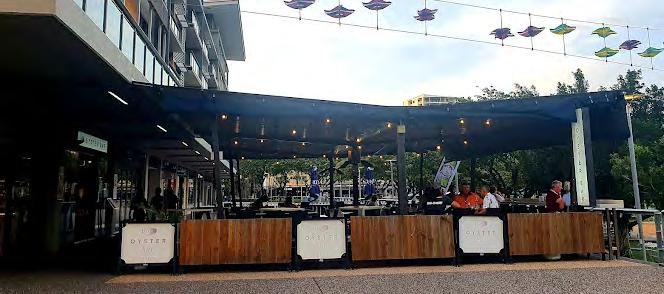
356 Murray Street, Perth RSVP by 25 October 2023 here!
ADELAIDE – THU 9 NOVEMBER 2023
5 – 7pm
West Oak Hotel
208 Hindley Street, Adelaide RSVP by 2 November 2023 here!

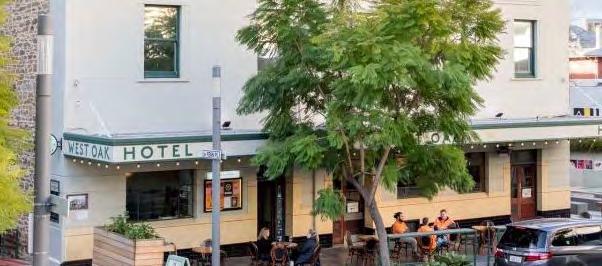
MELBOURNE – WED 29 NOVEMBER 2023
5.30 – 7.30pm
Yarra Botanica
Southbank Promenade, Southbank RSVP by 22 November 2023 here!
HOBART - THU 2 NOVEMBER 2023
5.30 - 7.30pm
Cascade on Collins, RACV Hotel Hobart

154-156 Collins St, Hobart
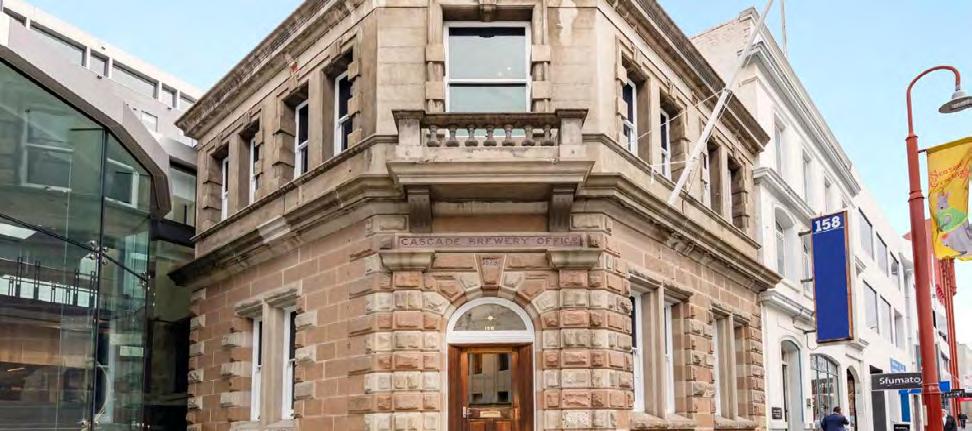
RSVP by 26 October 2023 here!
WATCH THIS SPACE!
LAUNCESTON - WED 8 NOVEMBER 2023
5.30 - 7.30pm
Peppers Silo Hotel
91 Lindsay Street, Invermay RSVP by 1 November 2023 here!
NSW, ACT & QLD events are being organised, more details to follow…
Thank you to APS member Aidan Cashin and colleagues Lianne Wood, Geronimo Bejaran, Ben Csiernik, Gisela Miyamoto, Gemma Mansell, Jill Hayden, and Martyn Lewis for sharing the following recent publication.
Article first published online: 3 June 2023
Journal Reference: Wood L, Bejarano G, Csiernik B, Miyamoto GC, Mansell G, Hayden JA, Lewis M, Cashin AG. Pain catastrophising and kinesiophobia mediate pain and physical function improvements with Pilates exercise in chronic low back pain: a mediation analysis of a randomised controlled trial. J Physiother. 2023:S1836-9553(23)00043-7.
DOI: 10.1016/j.jphys.2023.05.008
Abstract
Introduction
Pilates is a commonly prescribed and recommended type of exercise therapy to manage chronic low back pain because it has been demonstrated to provide clinically important improvements in pain and physical function compared with other exercise types. However, the mechanisms by which Pilates exercise improves patient outcomes is not known.
How much are the reductions in pain intensity and improvements in physical function from Pilates exercise mediated by changes in pain catastrophising and kinesiophobia?
This was a secondary causal mediation analysis of a four-arm randomised controlled trial testing Pilates exercise dosage (once, twice or thrice per week) against a booklet control in 255 people
with chronic low back pain. All analyses were conducted in R software (version 4.1.2) following a preregistered analysis plan. A directed acyclic graph was constructed to identify potential pre-treatment mediator-outcome confounders. For each mediator model, we estimated the intervention-mediator effect, the mediatoroutcome effect, the indirect effect, the direct effect, and the total effect.
Pain catastrophising mediated the effect of Pilates exercise compared with control on the outcomes pain intensity (indirect effect -0.21, 95% CI -0.47 to -0.03) and physical function (indirect effect -0.64, 95% CI -1.20 to -0.18). Kinesiophobia mediated the effect of Pilates exercise compared with control on the outcomes pain intensity (indirect effect -0.31, 95% CI -0.68 to -0.02) and physical function (indirect effect -1.06, 95% CI -1.70 to -0.49). The proportion mediated by each mediator was moderate (21 to 55%).
Conclusions
Reductions in pain catastrophising and kinesiophobia partially mediated the pathway to improved pain intensity and physical function when using Pilates exercise for chronic low back pain. These psychological components may be important treatment targets for clinicians and researchers to consider when prescribing exercise for chronic low back pain.
Declaration
All authors have no conflicts of interest to declare.
The Australian Pain Society (APS) is keen to share publications from our members with their colleagues via our eNewsletter. If you’ve had an article accepted or published recently, please contact our Assistant Editor Joanne Harmon via the APS Secretariat (aps@apsoc.org.au) with the title, authors, and reference (i.e., journal, volume, and DOI) of your article and request the submission template. We would love it if you also supply a short commentary (300 words max) to give our readers the gist of the article.
Thank you to APS members Michael Ferraro, Aidan Cashin, Carolyn Berryman, Lorimer Moseley, and James McAuley, as well as their colleagues Benedict Wand, Keith Smart, Louise Marston, and Neil O’Connell for sharing the following recent publication.
Article first published online: 12 June 2023
Journal Reference: Ferraro, M.C., Cashin, A.G., Wand, B.M., et al. Interventions for treating pain and disability in complex regional pain syndrome- an overview of systematic reviews. Cochrane Database of Systematic Reviews (2023)
DOI: https://doi.org/10.1002/14651858.CD009416.
pub3
Abstract
Background
Complex regional pain syndrome (CRPS) is a chronic pain condition that usually occurs in a limb following trauma or surgery. There is currently no consensus regarding the optimal management of CRPS, although a broad range of interventions have been described and are commonly used. This overview of systematic reviews aimed to summarise the evidence from Cochrane and non‐Cochrane systematic reviews of the efficacy, effectiveness, and safety of any intervention used to reduce pain, disability, or both, in adults with CRPS.
Design
Overview of systematic reviews.
Subjects
Cochrane and non-Cochrane systematic reviews of interventions aimed at treating pain and disability in adults with Chronic Regional Pain Syndrome (CRPS).
Methods
We searched eight databases from inception to October 2022 to identify systematic reviews of interventions for pain and disability in CRPS. Two authors independently assessed eligibility, extracted data, and assessed the quality of the reviews and certainty of the evidence using the
AMSTAR 2 and GRADE tools respectively.
Results
We included five Cochrane and 12 non‐Cochrane reviews. Using the AMSTAR 2 tool, four Cochrane reviews were judged as high quality, one Cochrane review as low quality; two non-Cochrane reviews as low quality and 10 non-Cochrane reviews as critically low quality. We found no high‐certainty evidence for any comparison. There was moderate certainty evidence that bisphosphonates are probably associated with increased adverse events of any nature (risk ratio (RR) 2.10, 95% CI 1.27 to 3.47; 4 trials, n = 181) and moderate‐certainty evidence that lidocaine local anaesthetic sympathetic blockade probably does not reduce pain intensity compared with placebo. For a wide range of other commonly used interventions, the certainty in the evidence was low and very low and provides insufficient evidence to either support or refute their use.
There is no high‐certainty evidence for the effectiveness of any therapy for CRPS. Until larger, high‐quality trials are undertaken, using an evidence‐based approach to managing CRPS will remain difficult. Current non‐Cochrane systematic reviews of interventions for CRPS are of poor methodological quality and should not be relied upon to provide an accurate and comprehensive summary of the evidence.
Declaration
None declared.
Thank you to APS members Connor Gleadhill, Steven Kamper, and Aidan Cashin, and their colleagues Katherine Dooley, Nicole Manvell, Michael Corrigan, Noah Birchill, Bruce Donald, Murray Leyland, Andrew Delbridge, Chris Barnett, David Renfrew, Steven Lamond, Craig Edward Boettcher, Lucia Chambers, Travis Maude, Jon Davis, Stephanie Hodgson, Andrew Makaroff, James B Wallace, Kelly Kotrick, Nicholas Mullen, Ryan Gallagher, Samuel Zelinski, Toby Watson, Simon Davidson, Priscilla Viana Da Silva, Benjamin Mahon, Caitlin Delore, Joshua Manvell, Benedicta Gibbs, Chris Hook, Chris Stoddard, Elliot Meers, Michael Byrne, Tim Schneider, Katarzyna Bolsewicz, and Christopher Michael Williams for sharing the following recent publication.
Article first published online: 16 June 2023
Journal Reference: Gleadhill C, Dooley K, Kamper SJ, Manvell N, Corrigan M, Cashin A, et al. What does high value care for musculoskeletal conditions mean and how do you apply it in practice? A consensus statement from a research network of physiotherapists in New South Wales, Australia. BMJ Open 2023;13(6):e071489.
DOI: http://dx.doi.org/10.1136/ bmjopen-2022-071489
Abstract
Background
To address the growing musculoskeletal burden, there are increasing calls to provide care that is high value. Definitions of valuebased care typically provide few tangible actions for individual clinicians or are not specific to physiotherapy care. Definitions have also lacked a number of perspectives, including from the people who are tasked with delivering it. Without input from clinicians about what high value care is and how it applies to practice, any intended impact on care delivery is unlikely to be realised.
Objective
To develop a physiotherapist-led consensus statement on the definition and provision of high-value care for people with musculoskeletal conditions.
Design
We performed a three-stage study using Research And Development/University of California Los Angeles Appropriateness Method methodology.
Setting
Australian primary care.
Subjects
Registered physiotherapists who are members of a practice-based research network (n=31).
Methods
We reviewed evidence about current definitions through a rapid literature review and then performed a survey and interviews with network members to gather consensus. Consensus was finalised in a face-to-face meeting.
Results
The rapid review revealed two definitions, four domains of high value care and seven themes of high-quality care. Online survey responses (n=26) and interviews (n=9) generated two additional high-quality care themes, a definition of lowvalue care, and 21 statements on the application of high value care. Consensus was reached for three working definitions (high value, high-quality and low value care), a final model of four high value care domains (high-quality care, patient values, cost-effectiveness, reducing waste), nine high-quality care themes and 15 statements on application.
Conclusions
High value care for musculoskeletal conditions delivers most value for the patient, and the clinical benefits outweigh the costs to the individual or system providing the care. High-quality care is evidence based, effective and safe care that is patient-centred, consistent, accountable, timely, equitable and allows easy interaction with healthcare providers and healthcare systems.
This work highlights a clinical perspective on high value care for musculoskeletal conditions. Clinicians can use this information to provide high value care in practice and policy makers can use our model as a framework through which to establish specific recommendations about high value care.
Declaration
Connor Gleadhill has nothing to declare.
What does high value care for musculoskeletal conditions mean and how do you apply it in practice? A consensus statement from a research network of physiotherapists in New South Wales, Australia
Date published: August 2023
Publisher: NewSouth Publishing
ISBN: 9781742238081
Reviewer: Lincoln Tracy
Dr Lincoln Tracy is a researcher and writer based in Melbourne, Australia, and the editor of the Australian Pain Society eNewsletter

I was extremely excited to hear Liam Mannix talk about Back Up at the Annual Scientific Meeting in Canberra earlier this year. I was equally excited when my copy of the book arrived last month and when I sat down to read it.
Many members of the Society may be familiar with the broad range of experts Mannix speaks with and/or refers to – Tim Austin, Lorimer Moseley, Joshua Pate, Hayley Leake, James McAuley, Chris Maher, Tasha Stanton, Peter O’Sullivan, Mick Vagg – to name a few.
Many may be familiar with the history of (back) pain, and how treatments have evolved and become popular over time. How treatments like spinal fusions, nerve ablations, and opioids became (and remain) prominent, despite there being many questions about if and how they work. And many will also be familiar with aspects of the “new science” underlying rehabilitation approaches for back pain, highlighted from a (potentially) unexpected source: the Australian Ballet Company.
In describing the approach implemented by the Company’s principal physiotherapist Sue Mayes – no scans (unless there is suspicion something has gone seriously wrong) and an intensive, personalised program of physical and psychological rehabilitation – Mannix describes how the effective management of back pain may be closer than we think.
A sense of familiarity with the history of back pain should not – and does not – detract from Back Up’s highly engaging mix of science and personal stories, including the shared experiences from Mannix, his father, and his friends about their own journeys with back pain.
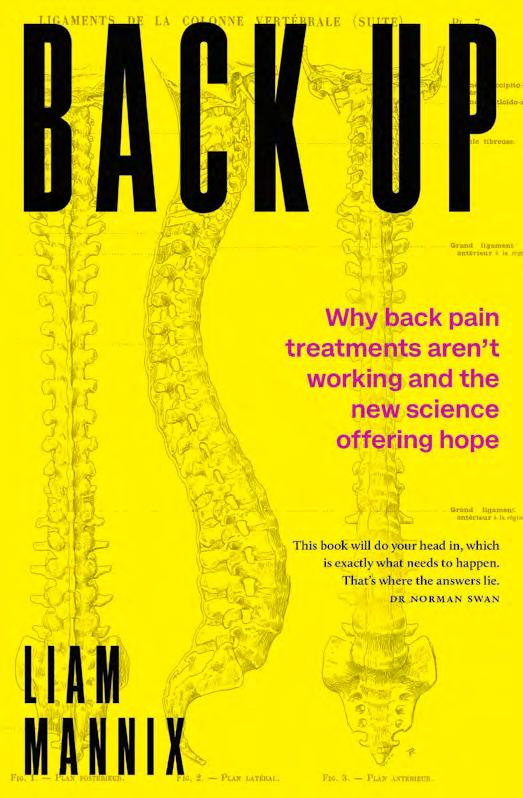
The quote from Norman Swan, medical journalist and host of ABC Radio’s Health Report, seems highly appropriate for the level of impact Back Up could have on those outside of the pain world: “This book will do your head in, which is exactly what needs to happen. That’s where the answers lie.”
One aspect of Back Up that has resonated with me is its focus on those who treat people with back pain and the challenges they face in providing safe, effective, and accessible evidencebased treatment. It is easy to denounce surgery as a ‘cure’ for back pain, but that doesn’t mean it still can’t have some benefit.
Mannix takes a balanced approach to this complex area, pairing clinical experiences from Ashish Diwan, a spinal surgeon, (where patients are grateful for the surgery despite not necessarily getting better) with the views of Ian Harris, an orthopaedic surgeon (who feels most, if not all, of the benefits of spinal fusion can be attributed to placebo).
The key messages of the book are beautifully summarised by Mannix in the conclusion:
“If we accept the evidence that back pain may be being driven in part by belief, by the way we think about and frame pain in our backs – well, part of the solution is going to be social. Changing the way we think about our backs. Changing the way we talk about them. Not freaking out when pain rears its head. When a colleague comes in with a sore back, treating it as an annoyance rather than a major problem. Seeking solutions that treat our bodies as complex, living, growing organisms that require a little stress, a little load for peak health –not as machines with readily replaceable parts.”
“Change the conversation, and we might be able to change back pain.”
Declaration
Lincoln Tracy has nothing to declare.
Lalloo, C., Mohabir, V., Campbell, F. et al. Pediatric Project ECHO® for Pain: implementation and mixed methods evaluation of a virtual medical education program to support interprofessional pain management in children and youth. BMC Med Educ 23, 71 (2023).
Reviewer: Nicole Pope, PhD Candidate, The University of Melbourne, Australia
DOI: https://doi.org/10.1186/s12909-023-04023-8
Interprofessional healthcare professionals who participated in the virtual Pediatric ECHO® for Pain program.
To determine the feasibility of implementing the Pediatric ECHO® for Pain program (based on participation and program acceptability), and to characterise the perceived impacts of the program on participant knowledge, selfefficacy, and clinical practice after six months. An additional exploratory objective sought to characterise attendance and engagement with Pediatric ECHO® for Pain before and immediately after the COVID-19 pandemic.
A needs assessment identified interprofessional education gaps and informed the Pediatric ECHO® for Pain program development before it was launched in October 2017. The no-cost program offered virtual interactive seminars called TeleECHO clinics (didactic and case-based learning) and a separate, Zoom-delivered Core Competency Curriculum focused on foundational pediatric pain education. The program is based at the Hospital for Sick Children (SickKids) in Toronto, Canada, but anyone interested in pediatric pain could register. The program was disseminated
broadly and demonstrated global reach, with healthcare professionals from 14 unique lowmiddle-income countries in attendance.
Online surveys were distributed at baseline and six months to assess study outcomes using seven-point Likert scales. Participant reflections on the program were also collected through open-text responses on the followup survey. Participant engagement was assessed for periods before and during the COVID-19 pandemic. Descriptive and inferential statistical analyses were conducted.
Eighty-five TeleECHO clinics were hosted from April 2017-March 2022, and two Core Competency sessions were hosted between November 2017-January 2019. Attendance to the TeleECHO clinics varied, with a mean attendance of 34 attendees (± 23.4). Thirty-seven individuals registered for the Core Competency sessions, and these sessions had an average attendance of 13 (± 3.7).
Acceptability scores at six months (n = 33) ranged from 5.0 (± 1.4) to 6.5 (± 0.5). TeleECHO clinic participants (n = 33) reported statistically significant (p < 0.05) improvements in topicspecific knowledge scores across all seven categories and significant improvements in self-efficacy for most assessed skills (eight out of nine skills) related to pain management after six months. Most participants reported positive practice impacts, including improved satisfaction with managing children with pain. There was a trend of greater engagement from ECHO® learners after the onset of the COVID-19 pandemic.
Results indicate that Project ECHO® is a feasible and impactful model for the virtual education of interprofessional healthcare professionals in managing paediatric acute and chronic pain.
implementation and mixed methods evaluation of a virtual medical education program to support interprofessional pain management in
Pediatric ECHO® was the first ECHO® program to focus on acute and chronic paediatric pain. Results demonstrate it is a feasible and effective e-mentoring interprofessional capacitybuilding education model to upskill healthcare professionals. Undertaking a needs assessment before launching the program was a strength of this work. It ensured curriculum topic relevance that addressed the self-identified learning needs of interprofessional healthcare professionals related to best practices in paediatric pain care. The program was perceived as relevant to practice and provided a positive mentorship environment and professional support. Participants reported it improved perceived knowledge and confidence to
manage children with acute and chronic pain. Future work should investigate whether knowledge, confidence, and positive practice changes are sustained with continued program participation. The program’s global reach, especially to healthcare professionals from lowmiddle-income countries, may help to reduce disparities and drive collaborative solutions that address local priorities in paediatric pain. Future Paediatric ECHO® sessions should consider having patients and families present their stories, their care experience, and strategies that helped them better manage pain.
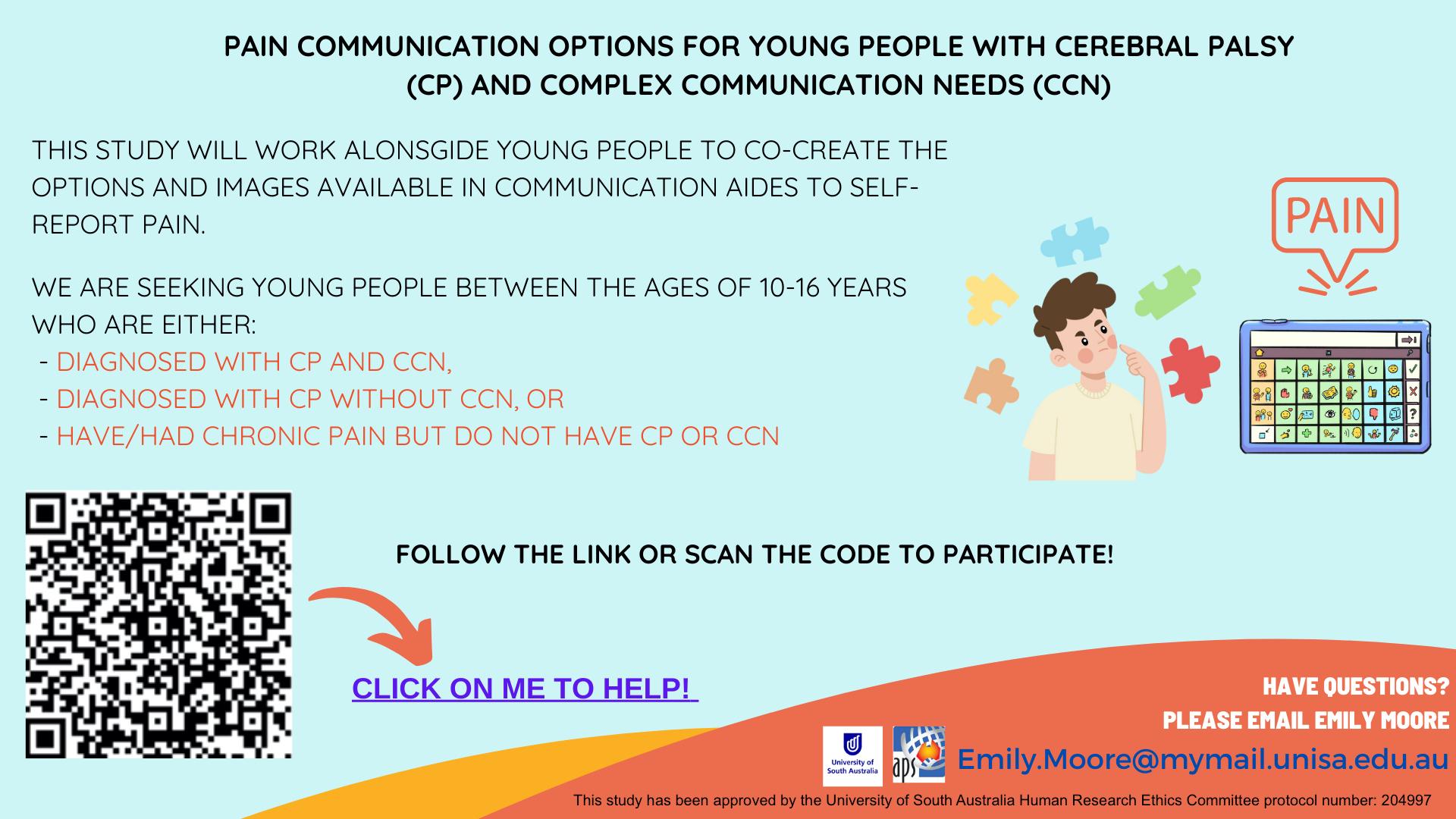
The reviewer declares no competing or conflicting interests in reviewing this article.
Elisabeth Rønning Rinde, Agneta AnderzénCarlsson, Reidun Birgitta Jahnsen & Randi Dovland Andersen (2023): “I have to obey my pain” – children’s experiences of pain burden in cerebral palsy, Disability and Rehabilitation.
Reviewer: Meredith Smith, Lecturer –Physiotherapy, University of Adelaide
DOI: https://doi.org/10.1080/09638288.2023.2191012
Study group
Fourteen children with cerebral palsy (CP; aged eight to 17 years of age), with varying motor, cognitive, and communication abilities.
Aims of study
To explore pain experiences of children with CP, and how pain influenced their everyday life.
Brief methodology
Researchers conducted semi structured individual interviews that focused on three broad topics: (1) How it felt to be in pain, (2) how pain influenced their everyday life, and (3) strategies and support used to prevent and manage pain. Interviews were transcribed verbatim, and data were analysed using inductive thematic analysis.
Data showed one overall theme: “I have to obey my pain”, within four themes: “My pain is mine alone”, “Pain brings me down”, “I want to participate but I have to rest”, and “Others can help me”. All children described pain as something they had to obey, which forced them to do or avoid doing something. Pain also limited participation, and a key strategy was for children to find the right balance between rest and activity to avoid or reduce pain.
Pain takes up a lot of space and energy in the lives of children with CP living with pain. There are a wide variety of experiences and challenges that highlight the need for individually tailored treatment strategies. These strategies should be developed with both the child and their parents.
This article highlights the unique experience of pain in children with CP. A strength of this article was the inclusion of children with communication and cognitive impairment, a group which has previously been excluded from research studies. The methodology was adjusted to accommodate these children by providing an initial ‘rapport building’ interview, using a ‘Talking Mat’, and using visual symbols. This successfully provided insight into the pain experience across the spectrum of ability seen in children with CP. The article also focuses on the need for the development and evaluation of pain interventions for children with CP. These could focus on teaching children selfmanagement strategies, to address the themes of ‘pain is mine alone’ and ‘I want to participate but have to rest’, as well as investigating caregiver education and training, to address the ‘others can help me’ theme.
The reviewer declares no competing or conflicting interests in reviewing this article.
“I have to obey my pain”
Schiariti, V, Shierk, A, Stashinko, EE, SukalMoulton, T, Feldman, RS, Aman, C, et al. Cerebral palsy pain instruments: Recommended tools for clinical research studies by the National Institute of Neurological Disorders and Stroke Cerebral Palsy Common Data Elements project. Dev Med Child Neurol. 2023; 00: 1–13.
Reviewer: Nadine Smith, Senior Physiotherapist, PhD candidate Perth Children’s Hospital, Perth Western Australia and Murdoch Children’s Research Institute Melbourne, Victoria
DOI: https://doi.org/10.1111/dmcn.15743
Review of article
Study group
This was a review of pain tools used for children and young people aged 0-18 years with a diagnosis of cerebral palsy (CP), or considered to be at risk of developing CP.
This study describes the process of updating the CP common data elements (CDEs), specifically identifying tools that capture the impact of chronic pain on children’s functioning.
Brief methodology
This work was done through a partnership with the National Institute of Neurological Disorders and Stroke (NINDs) and the American Academy for Cerebral Palsy and Developmental Medicine, which began in 2015. Existing pain CDEs were reviewed whilst simultaneously performing a scoping review with the search terms ‘chronic pain’, ‘cerebral palsy’, and ‘clinical assessment tool’, in four electronic databases between January 2000 and January 2020.
The psychometric properties and clinical utility of the included chronic pain tools were reviewed and mapped to the International
Classification of Functioning, Disability and Health framework (ICF). Psychometric properties were rated from an adapted PhenX (Phenotypes and eXposures) guideline, and the clinical utility attributes questionnaire. The recommended tools were posted on the NINDS CP CDE’s website for public review.
Fifteen of the 184 reviewed pain tools were recommended for chronic pain assessment in children with CP. For assessment of pain interference on activity and participation in children and young people with CP, the Bath Adolescent Pain Questionnaire, Brief Pain Inventory long and short forms, Child Activity Limitations Interview, Child SelfEfficacy Scale, Pain Interference Index, and The PROMIS Pediatric Pain Interference Sale were recommended. To assess the impact of pain on behavior in children and young people with CP, the Face, Legs, Activity, Cry, Consolability Scale, the Non-communicating Children’s Pain Checklist - Revised, the PROMIS Pain Behavior Short Forms, and the Pediatric Pain Profile were recommended.
This initiative addressed a content gap identified in the NINDS CP CDEs version 1.0. The CP CDE pain tools provide a framework for consistently measuring chronic pain in research and clinical studies involving children and young people with CP.
This paper addresses the need to assess the multidimensional impact of chronic pain on young people with CP. The recommended tools have been mapped to the ICF, which is useful to ensure chronic pain assessment moves beyond the body structures and function level. While the recommended tools are helpful
to help guide chronic pain assessment for young people with CP, there continues to be a significant gap as they do not capture the impact of pain on emotional functioning. Pain intensity as a means of measuring chronic pain in people with CP can be problematic. Schiariti et al. recommend assessment of pain intensity, however the recall period for the included pain intensity measures does not meet the definition of chronic pain, and pain intensity can vary even over a 24-hour period. The recommendation of tools that capture the impact of chronic pain on activity and participation is important, however several existing tools were not included, or listed as excluded tools. Of note, the modified-Brief Pain Inventory was not included, but has been used to capture pain interference with young people with CP who are unable to self-report.
Whilst the authors have posted the recommended set of CP pain CDEs in the NINDS CP CDE website for public review, the CDEs were not developed in partnership with consumers. It is unclear as to whether consumers had any input into the final tools recommended, which might impact uptake and implementation in clinical practice. Despite some limitations, the authors have clearly helped to advance the understanding and application of pain assessment in children and young people with CP. This will ensure young people with CP can be referred for timely and effective pain management to reduce the impact pain may have on activity and participation.
The reviewer declares no competing or conflicting interests in reviewing this article.
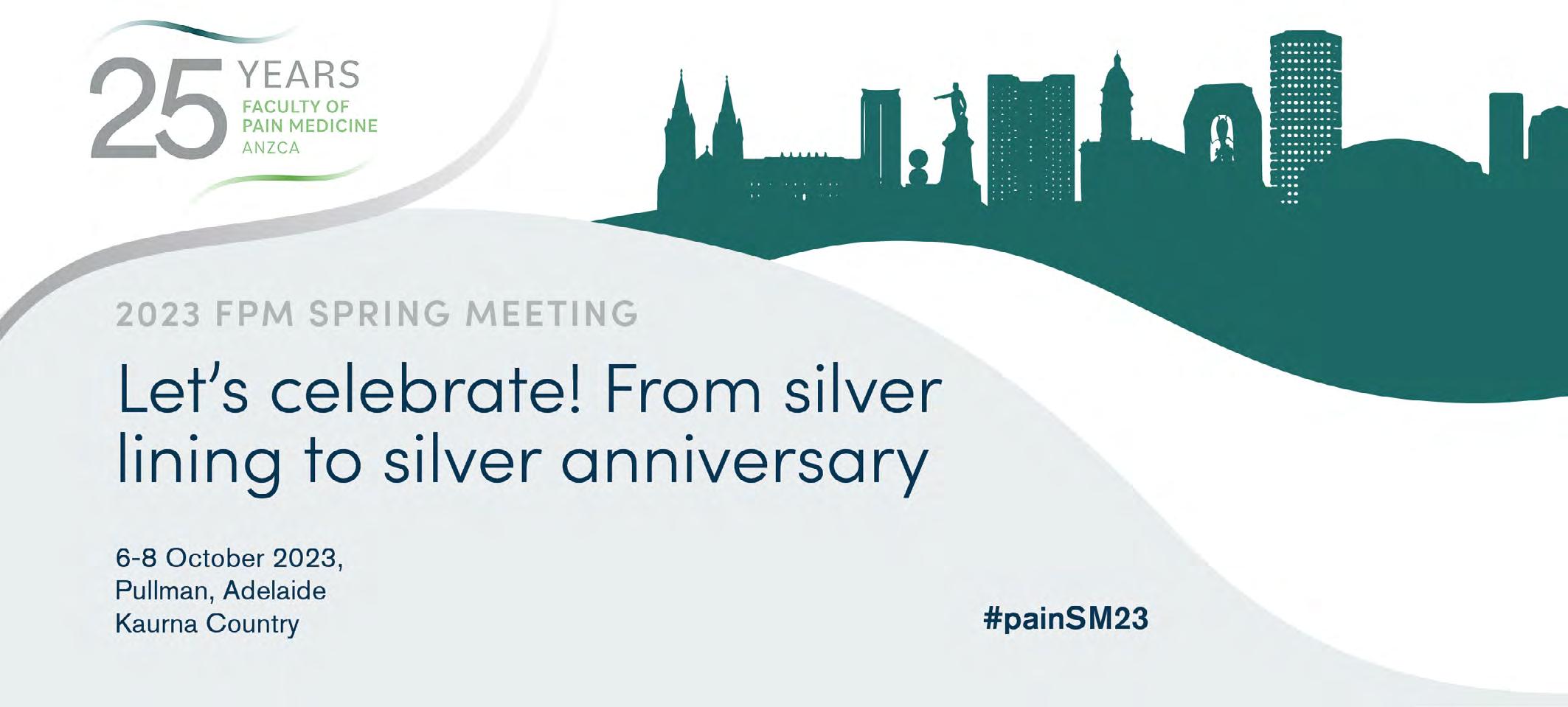


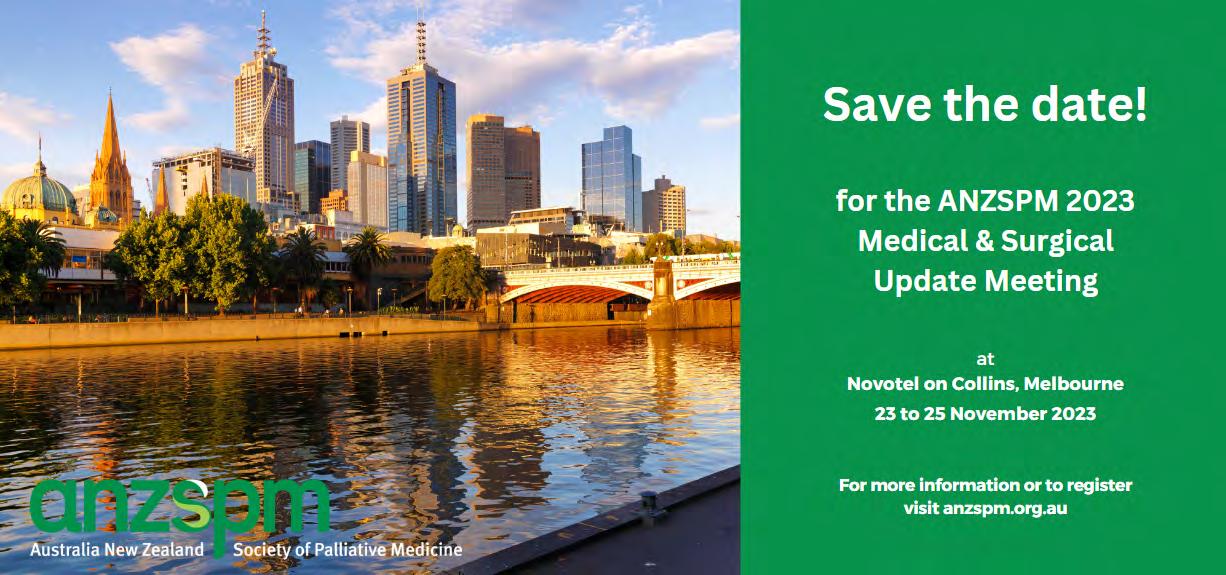


21-24 APRIL
2024
2024 AUSTRALIAN PAIN SOCIETY
44TH ANNUAL SCIENTIFIC MEETING
EXPRESSIONS OF INTEREST ONLINE: www.dcconferences.com.au/aps2024 Registrations Open 21 November 2023

IMPORTANT
For sponsorship and exhibition opportunities or more information please contact:
APS Conference Secretariat: DC Conference & Association Management (DCC&A)
P: 61 2 9954 4400
E: apsasm@dcconferences.com.au
•
•
•
• Extensive Industry Exhibition

• Trainee Session
• Welcome Reception
• Conference Gala Dinner
•
Professor Christine Chambers, Dalhouse University, Canada
Dr Christine Chambers is the Canada Research Chair (Tier 1) in Children’s Pain, a Professor of Psychology & Neuroscience and Pediatrics at Dalhousie University in Halifax, Nova Scotia, and a clinical psychologist. She also serves as the Scientific Director of the Canadian Institutes of Health Research’s Institute of Human Development, Child and Youth Health.
She is also the Scientific Director of Solutions for Kids in Pain - a national knowledge mobilisation network whose mission is to improve children’s pain management.
Professor Cheryl L. Stucky, Medical College of Wisconsin, USA
Cheryl Stucky is the Marvin Wagner Endowed Chair at the Medical College of Wisconsin where she is also Director of the Pain Division of the Neuroscience Research Center.
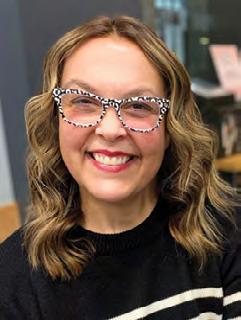
Dr Stucky’s lab studies the molecular, cellular and physiological mechanisms of sensation, particularly how we sense touch and pain. The central theme of Dr Stucky’s lab is to study the molecular and physiological mechanisms that underlie somatosensory mechanotransduction in the normal, healthy state and in conditions of tissue injury or disease.

SAVE
www.dcconferences.com.au/nsanz2024
Neur omodulation Societ y of Au s tralia and


Ne w Zealand
A chapter of the International Neuromodulation Society
NEUROMODULATION SOCIETY OF AUSTRALIA AND NEW ZEALAND

17TH ANNUAL SCIENTIFIC MEETING (NSANZ 2024)
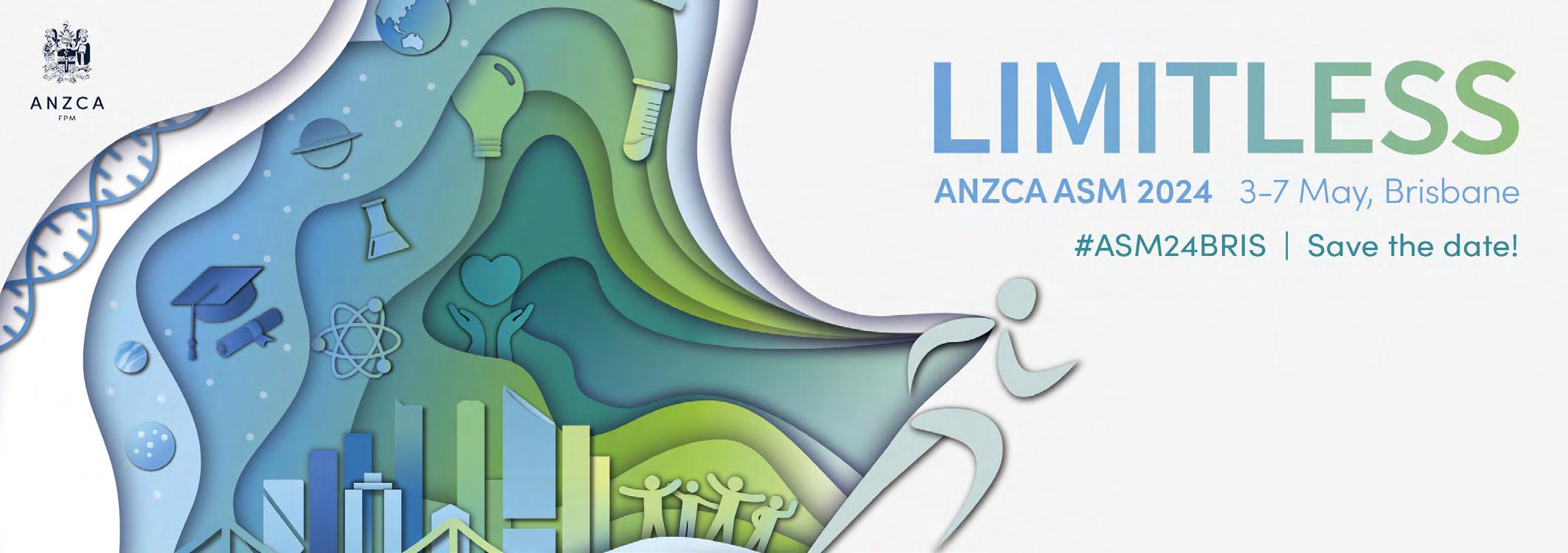
Neuromodulation: Can we do it better?
19 – 21 JULY 2024
HOTEL GRAND CHANCELLOR, HOBART, TAS
INCLUDES CADAVER WORKSHOP
Friday 19 July 2024, University of Tasmania
> Check out the full list of Global Year 2023 Fact Sheets, published by the IASP. New resources being added throughout the year: https://www. apsoc.org.au/global-year-against-pain
Other items of interest for our members:
> Latest opioid data from the Australian Bureau of Statistics: Opioid induced deaths in Australia. https://www.abs.gov.au/articles/opioidinduced-deaths-australia
> Australia’s annual overdose report 2019 from the Pennington institute: http://www.penington. org.au/australias-annual-overdose-report-2019/
> The Third Australian Atlas of Healthcare Variation: This series explores how healthcare use in Australia varies depending on where people live. It investigates reasons for variation that may be unwarranted, and provides specific achievable actions to reduce unwarranted variation. https://www.safetyandquality.gov.au/atlas
> Painaustralia eNewsletter latest issue, available online at http://www.painaustralia.org.au/ media/enews
> ePPOC: electronic Persistent Pain Outcomes Collaboration: The electronic Persistent Pain Outcomes Collaboration (ePPOC) is an Australasian initiative that aims to improve the quality of care and outcomes for people who experience chronic pain. For more information about ePPOC, refer to the website: http://ahsri. uow.edu.au/eppoc/index.html
> PainHEALTH website: painHEALTH‘s aim is to help health consumers with musculoskeletal pain access reliable, evidence-based information and tips to assist in the comanagement of musculoskeletal pain. painHEALTH is an initiative of the Department of Health, Western Australia http://painhealth. csse.uwa.edu.au/
> Stanford University: CHOIR Collaborative Health Outcomes Information Registry https://choir. stanford.edu/
> Opioid Podcasts for GPs: These podcasts are produced by David Outridge GP, and FAChAM Trainee as a project under the auspices of Dr Steven Kelly Staff Specialist in Addiction Medicine, Kullaroo Clinic Gosford. A 20 week series from the Hunter Postgraduate Medical Institute (University of Newcastle) : http://www. gptraining.com.au/recent-podcasts
> Airing Pain: Pain resources via an online radio show produced by Pain Concern, a UK registered Charity: http://painconcern.org.uk/ airing-pain/
> Indigenous Resources: New webpage on the APS website aggregating Indigenous resources: https://www.apsoc.org.au/IndigenousResources
> Opioids: Communications videos: https://www. nps.org.au/opioids-communication-videos
TGA
> Codeine information hub: https://www.tga.gov. au/news/news/codeine-information-hub
NSW Agency for Clinical Innovation resources:
> Brainman and Pain Tool Kit translations, SEP15: http://www.aci.health.nsw.gov.au/chronic-pain/ translated-resources
> Pain Management Resources: https://aci. health.nsw.gov.au/networks/pain-management/ resources
> Quicksteps to Manage Chronic Pain in Primary Care: http://www.aci.health.nsw.gov.au/chronicpain/health-professionals/quick-steps-tomanage-chronic-pain-in-primary-care
> Built into Quicksteps: “How to de-prescribe and wean opioids in general practice”: http:// www.aci.health.nsw.gov.au/chronic-pain/healthprofessionals/quick-steps-to-manage-chronic-painin-primary-care/how_to_de-prescribe_and_wean_ opioids_in_general_practice
> A list of helpful apps for consumers and clinicians now available at: http://www.aci. health.nsw.gov.au/chronic-pain/healthprofessionals/management-of-chronic-pain
> Chronic Pain in the ED: https://www.aci.health. nsw.gov.au/networks/eci/clinical/clinicalresources/clinical-tools/pain-management/ chronic-pain-in-the-ed
6-8 October 2023
Faculty of Pain Medicine (FPM) 2023 FPM Spring Meeting
Pullman Adelaide, Adelaide, SA
https://www.anzca.edu.au/events-courses/ events/anzca-and-fpm-annual-events/fpmannual-events/2023-fpm-spring-meeting
13 October 2023
Pain Nurses Australia 2023 Annual Professional Day - Catching Up in Pain Management
Waterview Conference Centre, Bicentennial Park, Sydney Olympic Park, NSW
https://www.painnurses.au/index. cfm?module=event&pagemode=indiv&page_ id=1790837
13-14 October 2023
Australian College of PeriAnaesthesia Nurses ACPAN 2023
Newcastle Exhibition & Convention Centre (NEX), Newcastle, NSW
https://acpan.edu.au/acpan-national-conference2023-home-page/
24-25 October 2023
Australia & New Zealand Musculoskeletal Clinical Trials Network (ANZMUSC)
Australia & New Zealand Musculoskeletal Clinical Trials Network (ANZMUSC)
Coogee Surf Club, Sydney NSW, Australia
https://anzmusc.org/annual-meetings/2023annual-scientific-meeting/
28-30 October 2023
World Institute of Pain (WIP)
12th World Congress of World Institute of Pain
Susesi Hotel & Convention Centre, Antalya, Turkey
https://www.wip2023.org/
8 November 2023
Australian Commission on Safety and Quality in Health Care
National Medicines Symposium 2023
Online Conference
https://confirmsubscription.com/h/ j/036030FF266D8835
14 November 2023
National Trauma Network
NTS23 “Towards Excellence”
Te Papa Tongarewa, Wellington, NZ
https://www.traumasymposium.nz/
16 November 2023
Future Shakers
Pain Futures Summit
107 Projects South Everleigh, Sydney, NSW
https://www.futureshakers.co/post/futureshakers-pain-futures-summit
23-25 November 2023
Australia New Zealand Society of Palliative Medicine (ANZSPM)
ANZSPM 2023 Medical & Surgical Update Meeting
Novotel Melbourne on Collins, Melbourne, VIC, Australia
https://willorganise.eventsair.com/2023anzspm-update-meeting/
21-24 March 2024
New Zealand Pain Society (NZPS)
NZPS 2024 - Empowering Pain Management in New Zealand
The Dunedin Centre, Dunedin, NZ
https://www.nzps2024.nz/
5-7 April 2024
Spine Society of Australia (SSA)
2024 Spine Society of Australia 35th Annual Scientific Meeting
International Convention Centre (ICC), Sydney, NSW
https://www.dcconferences.com.au/ssa2024/ home
21-24 April 2024
Australian Pain Society (APS)
2024 Australian Pain Society 44th Annual Scientific Meeting
Darwin Convention Centre, NT
https://www.dcconferences.com.au/aps2024/
2-4 May 2024
Exercise & Sports Science Australia (ESSA) Research to Practice 2024
International Convention Centre (ICC), Sydney, NSW
https://www.researchtopractice2024.com.au/ event/7b82256c-0d69-4710-96eb-57a8df5fed26/ summary
3-7 May 2024
Australian and New Zealand College of Anaesthetists (ANZCA)
ANZCA 2024 Annual Scientific MeetingLimitless
Brisbane Convention & Exhibition Centre, Brisbane, QLD
https://www.anzca.edu.au/events-courses/ events/major-events/anzca-nationalevents/2024-anzca-asm
19-21 July 2024
Neuromodulation Society of Australia and New Zealand (NSANZ)
2024 Neuromodulation Society of Australia & New Zealand 17th Annual Scientific Meeting (NSANZ 2024)
Hotel Grand Chancellor, Hobart, TAS
https://www.dcconferences.com.au/nsanz2024/
16-18 September 2024
National Rural Health Alliance 17th National Rural Health Conference
Perth Convention & Exhibition Centre, Perth, WA
https://www.ruralhealth.org.au/
Vision:
All people will have optimal pain management throughout life.
Purpose:
The Australian Pain Society is a multidisciplinary association whose purpose is to advance pain management through education, research, and advocacy for transformational improvements in clinical care.
Priorities:
In order to achieve our purpose, the Australian Pain Society will provide:
> Membership
> Research
> Education
> Services and resources
> Good governance and operations
> Advocacy
President:
Mrs Joyce McSwan
Gold Coast Primary Health Network
Persistent Pain Program, QLD and PainWISE
Tel: 0412 327 795 Fax: 07 3539 9801
President-Elect:
Ms Bernadette Smith
Psychology Plus
South Burnie TAS
Tel: 03 6431 9959 Fax: 03 6431 9950
Secretary:
Mrs Dinah Spratt
Physiotas Physiotherapy
Shearwater TAS 7307
Tel: 03 6428 7500 Fax: 03 6424 7811
Treasurer:
Dr Laura Prendergast
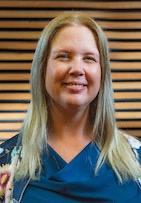

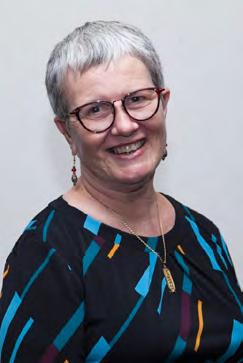


Pain Service, Northern Health Broadmeadows VIC 3047

Tel: 03 8345 5166 Fax: N/A
Work days Mon & Thu
ACT Director:
Dr Andrew Watson



Calvary Hospital
Canberra ACT 2617
Tel: 02 6201 6352 Fax: N/A
NSW Director:
Mr Connor Gleadhill
University of Newcastle, Hunter New England Population Health, Newcastle Sports Medicine
Newcastle NSW 2308
Tel: 0405 203 661 Fax: 02 4924 6022
NT Director:
Adjunct A/Prof Cindy Wall


Clinical Psychology Assessment & Consultancy
Fannie Bay NT 0820
Tel: 0488 993 210 Fax: 08 6266 3777
QLD Director:
Mrs Karalyn Huxhagen
KH Pharmacy Consulting
Mackay QLD 4740
Tel: 0418 185 972 Fax: 07 4805 6155
SA Director:
Ms Heather Gray
Royal Adelaide Hospital
Adelaide SA 5000
Email: heather.gray@sa.gov.au
TAS Director:
Mr Sinan Tejani
InBalance Physiotherapy
Launceston TAS 7250
Tel: 0469 967 841 Fax: N/A
VIC Director:
Dr Esther Dube

Austin Health
Heidelberg VIC 3084
Tel: 03 9989 1676 Fax: N/A
WA Director:
Ms Jacintha Bell
Lifeworks Occupational Therapy
Subiaco WA 6008
Tel: 0451 178 880 Fax: 08 6323 3329
Immediate Past President:
Ms Trudy Maunsell
Retired
QLD SPC Chair:

Professor Kevin Keay



Department of Anatomy
University of Sydney
Camperdown NSW 2006
Tel: 02 9351 4132 Fax: 02 9351 2817
IASP Liaison:
Professor Fiona Blyth AM

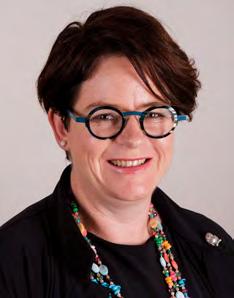

Sydney School of Public Health
Faculty of Medicine and Health
University of Sydney
Camperdown NSW 2006
Email: fiona.blyth@sydney.edu.au
Communications Coordinator:
Mrs Joyce McSwan
Gold Coast Primary Health Network
Persistent Pain Program, QLD and PainWISE
Tel: 0412 327 795 Fax: 07 3539 9801
Newsletter Editor:
Dr Lincoln Tracy
School of Public Health and Preventive Medicine
Monash University
Melbourne VIC 3004
Tel: 03 9903 0288
Newsletter Assistant Editor:
Dr Joanne Harmon
School of Clinical and Health Sciences
University of South Australia
Adelaide SA 5000
Tel: 08 8302 1442
Scholarship/Grant Selection Subcommittee Chair:
Dr Michael Farrell
Retired
VIC Secretariat:
DC Conference & Association
Management Pty Ltd
PO Box 637
North Sydney, NSW 2059
Tel: 02 9016 4343
Email: aps@apsoc.org.au
Website: apsoc.org.au
